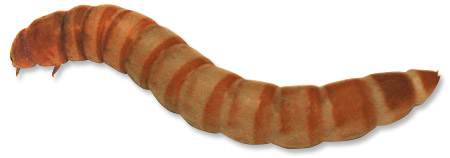 What is the aim of this FAQ?
What is the aim of this FAQ? This document contains information regarding of monitor lizards in captivity. I will try to persuade you to think about your ability to keep a monitor in captivity. This FAQ will also try to prevent you from getting in over your head, and helping you make a responsible decision on which species to keep if you decide to keep a monitor. Furthermore this FAQ serves as a means to provide the best possible information on captive monitor husbandry. I will try to contrast different husbandry techniques in order for YOU to determine which is best.
A lot of information available on monitor lizards is misleading. The pet trade is often responsible for spreading this inaccurate information about monitors. Pet stores will sell baby Nile monitors and tell the customer it will only grow to the size of the cage. They will tell customers it will be "dog tame" and a fun pet. They will sell a 30 gallon aquarium and tell the customer this is the biggest cage the monitor will need. They will tell you all the nile monitor will eat for the rest of its life is crickets. They will tell you monitors do not need much heat above room temperature. They will tell you anything they need to tell you in order to make a sell. All of this information is inaccurate and you will end up with a dead monitor. Monitor lizards, of any species, really are not for the beginner reptile keeper. The smaller species, such as varanus acanthurus or "ackies" , are great for first time monitors keepers. The larger species, such as varanus salvator or varanus niloticus, although cute little lizards as hatchlings, grow at tremendous rates and can easily be 4'+ by the end of their first year and can eventually grow upwards of 6'. There is no guarantee they will become tame no matter how much you work with them, and even a bite from an average sized monitor can cause severe damage not to mention an incredible amount of pain. Monitors will often use their tail as a whip for their primary defense. Their powerful limbs accompanied by their very sharp claws can also do some considerable damage not only to you, but to your belongings in the case of an escape. These animals are not cheap to keep as well. Their caging and food can easily reach over a $1000 a year so it is best to plan ahead.
Although I have done an incredible amount of research over the last two years and have been helped by others in writing this FAQ, this is by no means an end all document. I urge you to do your own research before purchasing a monitor. This is the most accurate information I can provide you, but that does not necessarily make it true. Monitor husbandry is relatively new and is continuing to evolve. Thus, what is said here today may not be true tomorrow. However, I will do my best to make this a living document and keep the information as up to date as possible.
Most species of monitors commonly kept in captivity can be kept in very similar ways. Their basic requirements are the same although some variation does exist. I will try to treat as many species as I can in their own sections, but this is based on the cooperation and information of others who keep them. However almost all the information gathered here can be applied to any species.
INTRODUCTION
What is a monitor?
Monitor is the common name for lizards belonging in the family Varanidea. All monitors, as of now, belong to the genus varanus but they may soon be split into smaller groups including the Odatria group (Bennett 1998). Virtually all monitors are similar in appearance with the main variation being size. As of now there is still some confusion in the taxonomy of monitors lizards and considerable work needs to be done in the future.
How many species of Monitors are there?
Nobody knows for sure. As of now there are around 50 recognized species depending on who you talk to. However more are constantly being identified and there are many known yet undescribed species.
How large do monitors get?
Monitors vary an incredible amount in size. The smallest is V. brevicauda which only reaches a size of 23cm (Bennett 1998). Determining the largest monitor is a bit trickier as it depends on your definition of largest. The komodo Dragon (V. komodoensis) is definitely the largest in bulk and near the longest as well. There are reports of komodo dragons being upwards of 9' although this may be unusual. This species is endangered and luckily is not available to the public. The longest monitor available in captivity is the crocodile monitor (V. salvadorii) and they too can reach upwards of 9' but the majority of that length is tail and they do not reach anywhere near the bulk of a komodo dragon. Two other large monitors, the water monitor (V. salvator) and nile monitor (V. niloticus) are also available and commonly kept in captivity.
How fast do monitors grow?
Monitors grow at incredible speeds if they are provided the proper conditions. Heat and the amount of food given will affect a monitor's growth rate. A savannah monitor I have grew from 7" to 44" in a year and then grew from 44" to 48" in the next six months and has not grown since. Monitors grow very rapidly in their first year, under ideal conditions, and then slow down until they reach their maximum size.
How long do monitors live?
Due to inaccurate records and the majority of animals being imported it is hard to say how long monitors live. They certainly can live to be over ten years of age and I have heard of water monitors being kept for over 20 years in captivity although I do not have proof of this. Regardless of the details, a monitor lizard is a long commitment and one should plan on it living for well over 10 years.
PURCHASING
What do I need to consider before buying a monitor?
Before you purchase a monitor you need to make sure you have fully researched the animals requirements and have a proper enclosure already set up. Some cities have laws banning or regulating the keeping large reptiles in captivity. You should check with the local law enforcement agencies in your area if any apply to the keeping of monitors.
The monitor itself should be active and alert. If an animal is �"tame" or lethargic that can be a sign poor health. The monitor's eyes should be bright, clear, and opened wide. It should actively flick its tongue as it moves around. Its nose and mouth should be clear of mucus. The vent should also be clean. The base of the tail should be round and firm, there should not be any protruding bones. Healthy monitors often do not want to be held especially hatchlings. They will try to run, whip their tail, defecate, and lastly bite you. These are things healthy monitors do and if you have a problem with this do not get a monitor. Not all monitors are as feisty as this but this is what one should expect. Look under species accounts to find which species might be better suited for your needs. Often times you can find tame older monitors but make sure they are kept in good conditions with adequate temps. "Tame" monitors at a pet store often turn out to be nothing more than cold monitors and are "monsters" when given a proper set up
How much can I expect to pay?
This depends on the species. Savannah monitors (v. exanthematicus) and Nile monitor (V. niloticus) are heavily imported and I have seen them for sale at $15. Captive Bred species command a much higher price but are worth it. They are healthier, less stressed, and should not contain parasites. Also by buying captive bred monitors you are helping alleviate the stresses on wild population. Be careful though and ask for proof (photos of eggs and the animals hatching) of the animal being captive bred as it is common practice for dealers to misrepresent their stock in order to sell it faster. Virtually all Indonesian and African monitors are imported although there are a few exceptions.
Australian monitors are all captive bred due to a ban on the exportation of Australian wildlife. The price for Australian monitors range from about $250 for yellow ackies (V. acanthurus brachyurus) to well over a thousand for the less common. However many Australian monitors belong to the subgenus odatria (dwarf monitors). This does not mean they are small by any means. The most common (V. acanthurus) can reach length up to 3', although 2' is much more common. Remember you get what you pay for.
Is there anything else I need to buy?
When you purchase a monitor you should already have an enclosure set up. This includes the cage, substrate, heat lamps, any supplemental heating device, hide spots, a basking spot, water bowl and any decorations. A digital thermometer is also good to have around and one with a probe can be purchased for under $20. A good book on monitors should also be purchased if you have not already. Look under misc. for books I recommend. You may also want to purchase some leather gloves, such as welder gloves, for when you handle your monitor.
How do I transport my monitors?
Hopefully you will not have to transport your monitors but if you do here are some methods. For smaller monitors I have used small burlap bags similar to potato sacks or pillow cases. I usually put some moss or substrate in with the monitor and tie up the end. For larger monitors it may be possible to transport them in dog carriers or other such devices. For aggressive animals you can duck tape the mouth closed to prevent the monitor from biting. THIS IS NOT FOR SHIPPING. These methods are for short trasportation such as to and from the vet etc. Remember these animals should not be left in the sun, as they have no way of escaping heat while being transported. Extreme cold should also be avoided. A small 48-hour heat pack can be placed under the monitor if it is being transported in cold conditions.
HOUSING
What important factors must I consider to house my monitor?
Before purchasing a monitor one must have an adequate enclosure set up for it. The enclosure is a very important part of proper monitor husbandry. The best enclosures will be insulated to hold both heat and humidity. A good substrate is needed for burrowing. The enclosure must be large enough for adequate hide areas; a water bowl, basking area and you must be able to provide the proper thermal gradient. For many species the best type of enclosure is a trough or stock tank, which are available at many feed stores. They come in a multiple of sizes with the largest I have seen being 8'x3'which can suit the needs of an averaged sized monitor.
How large does the enclosure need to be?
The best answer to this is as big as humanly possible. Remember in this case bigger is better. That said there are minimums that a monitor should be kept in. The best rule of thumb to follow is the enclosure should be twice as long as the monitor and as wide as the monitor is long. For instance a four foot monitor should be kept in a cage that is AT LEAST 8' long by 4' wide. Again this is the minimum and if you can go larger than by all means do so. You want enough space so that your monitor can move around comfortably and have access to all temperatures in the thermal gradient you provide. Due to the rapid growth of monitors it is best to plan ahead with enclosure size. The most economical and practical cage would be one large enough to house an adult no matter what size the animal is now.
What type of enclosure can I use for monitors?
There are many styles of enclosures sutable for monitors. If you must use a smaller tank for a hatchling than required for an adult there are several options available. The most obvious are the glass cages manufactured for reptiles. You can also use glass aquariums for fish although you will have to design a secure lid for these. With either one of these the screen top should be eliminated. Screening not only causes excessive heat loss but it will also dehydrate the cage and thus the monitor very rapidly. This can cause many health problems one of the most obvious is retained shedding. You can replace the screening with plexi-glass relatively cheaply. You can also custom order a cage or build one, but if you go this route you might as well build one or order one that is large enough to house an adult.
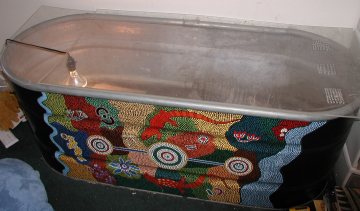 For dwarf monitors to mid-sized monitors (no bigger than 4' in total length) the best type of cage I have used are troughs or stock tanks. These can be purchased from feed or agriculture stores. They can be bought in a variety of sizes the minimum size for even the smallest monitor would be one that is 4' long by 2' wide. For these you will have to fabricate your own lid. The best lid for these is a sheet (or two) of (painted trough in room)
For dwarf monitors to mid-sized monitors (no bigger than 4' in total length) the best type of cage I have used are troughs or stock tanks. These can be purchased from feed or agriculture stores. They can be bought in a variety of sizes the minimum size for even the smallest monitor would be one that is 4' long by 2' wide. For these you will have to fabricate your own lid. The best lid for these is a sheet (or two) of (painted trough in room)
plexi-glass. For ventilation you can drill a series of holes near one end. The holes should be drilled above the cool end of the enclosure. You want to have enough ventilation to provide for an exchange of air but not too much such that air can freely escape the enclosure.
One thing to avoid is a cage made from screen. These types of cages will hold your monitor only long enough for him to completely shred it up and thus escape. Also cages with large screened lids should also be avoided. These types of cages can create problems with regulating temperatures and dehydration.
When purchasing a cage you should also keep in mind whether you want a front opening cage, often with sliding glass doors, or a cage which opens from the top. The main advantage of a front opening cage is they can often be stacked thus saving room. With keeping monitors this advantage is far outweighed by the disadvantages associated with these cages. Front opening cages make it difficult to provide a deep substrate because they often only have a liter dam that is only a few inches high at best. If the cage is deep enough (over 2' in depth) then you can put a few inches of substrate toward the front and then create a hill of substrate toward the back which is deep enough to allow your monitor to burrow. This however limits your monitor's choices of where to burrow to where you have made the hill. Another problem with front opening cages with sliding glass doors is the substrate will often get in the siding door track. This makes it difficult and sometimes impossible to open the door. This can be remedied by having a door that swings up or down on a hinge, however the substrate problem will still be present.
What type of enclosure can I use for larger monitors?
Depending on the species, you have a few choices. For the larger monitors you are very limited to what you can build or you can dedicate an entire room to the monitor. A relatively cheap enclosure can be built out of plywood and 2x4s. A non-toxic waterproofing coat should be added to the wood to prevent it from warping. Marine resin (used to repair fiberglass boats) is an inexpensive and effective way to water proof the wood. One must follow the directions carefully and be sure to mix the hardener and resin accurately. You should also provide plenty of time for the resin to dry and do not place an animal in the enclosure until you can no longer smell any fumes from the resin. Another popular material for building enclosures is melamine. This is basically particle board with a thin plastic like coating. Personally I do not like this material for monitor enclosures. For one it is very heavy and hard to work with. Second the plastic coating does little to waterproof the enclosure and eventually the particle board will begin to deteriorate. I have heard of other problems associated with use of this material as well.
Do monitors only grow to the size of their enclosures?
No, this is a myth. Monitors will continue to grow regardless of cage size and in too small of a cage this can cause serious health problems. The monitor will not be able to thermo-regulate and can easily overheat. There have been cases where monitors spines have become crooked from growing in a cage that was too small. Besides being cruel, a monitor will more than likely die if kept in a cage which is too small. The cage should be large enough to allow for plenty of choices in movement and hiding areas.
Can monitors escape from enclosures easily?
Monitors are excellent escape artists. Their intelligence combined with their power makes it possible to exploit any weak link in your enclosure. They will work away at a small hole until it is large enough for them to escape out of. They also will remember how they escaped, and if the enclosure is not improved, they will escape again.
What furnishings need to go into an enclosure?
This depends on the type of monitor. However there are three basic needs of all monitors. They will need a basking area (this will be covered more below), hide areas, and a water bowl. Some monitors, such as water monitors (V. salvator) may benefit from a large pond in which they can swim around. Such ponds require extensive filtration and or daily water changes, as the monitor will often defecate in the water. Smaller water bowls should always have a fresh supply of water. For hatchling monitors be sure not to fill the water too deep as there is a potential for them to drown. Adequate hide areas are important as well. There should be multiple options of hide areas 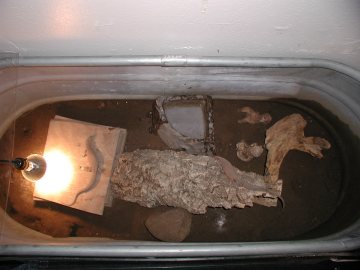 across the thermal gradient so as not to force your monitor to hide in too cool or too warm of a spot. Monitors will often utilize their burrows as a hiding area but other options should also be available. Hiding areas will cut down on the amount of stress placed on a monitor in captivity.
across the thermal gradient so as not to force your monitor to hide in too cool or too warm of a spot. Monitors will often utilize their burrows as a hiding area but other options should also be available. Hiding areas will cut down on the amount of stress placed on a monitor in captivity.
Other types of furnishing to provide are hollow logs, large branches to climb, and perhaps rocks. You can also decorate the enclosure with silk plants or even live plants. However (Ackie enclosure with water bowl, rock, basking platform, log,
hallow log/cork cark, and clay statues)
the monitor will often destroy small live plants very rapidly and silk foliage will often be rearranged by the monitor. Hollow logs can be useful both as a hiding area and for some species a nesting site.
What type of substrate should be used?
The best substrate for many monitors is plain dirt. You can dig up your own dirt; this makes it both free and unlimited. Just about any type of dirt can be used and will be suitable for burrowing. However dirt which is heavy in clay should be avoided if possible. Again this is simply for burrowing and an adequate nesting substrate may be something entirely different.
Another good substrate, particularly for Indonesian monitors is cypress mulch and leaf litter. This substrate will hold moisture well and will allow for burrowing. It is also very easy to clean. The only problem with cypress mulch is its availability. It is impossible to find in some areas however Pro Exotics offers large bags of it for sale and they will ship it.
What temperature should their environment be?
The most accurate word describing temperature for monitors is choice. You do not want to force your monitor to use certain temps but rather you want to create a thermal gradient with a range of usable temps for your monitor. The range of temps I have been most successful at are from a 130-150 degree basking spot down to about 70-75 degrees on the cool end. Remember the basking spot is just that a spot. It should be about the size of the monitor's body. A too small of an area and the monitor will not be able to use the heat properly. A too large of an area and the proper range of temps will not be provided and your monitor may not be able to escape the heat.
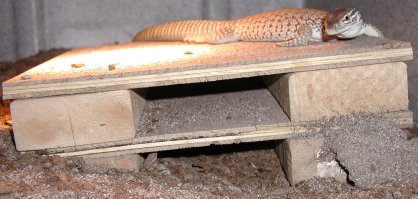 The easiest and most effective way of making a basking area for many of the smaller species of monitors is with a multilevel plywood stack. Basically its 2x4's separating plywood sheets. This allows for different temps on different levels. Place the stack (Sand monitor using basking platform)
The easiest and most effective way of making a basking area for many of the smaller species of monitors is with a multilevel plywood stack. Basically its 2x4's separating plywood sheets. This allows for different temps on different levels. Place the stack (Sand monitor using basking platform)
right below your heat source and you are done.
The best heat source I have used for creating a high basking spot and a steep thermal gradient is halogen floodlights. I have used many types of reptile heat lamps, ceramic heat emitters, heat panels and none are as effective as halogen lighting. You can purchase these bulbs at any hardware store. You should purchase a bulb that is between 45 watts and 75 watts depending on your needs. Most people assume that a higher wattage bulb will produce more heat and thus they go for high wattage bulbs. However rather than buying higher wattage bulbs all one has to do is move the bulb closer or farther away from the basking spot to achieve the ideal temps. Higher wattage bulbs heat the air more and thus more air is escaping the enclosure. This warm air is humid (hopefully) and is replaced by dry cool air. This leads to the dehydration of the cage and eventually the monitor. This is why lower wattage bulbs tend to be better for heating an enclosure.
For larger monitors a bank (two bulbs next to each other) of bulbs may be necessary. This will produce a larger basking spot under which the entire body of the monitor will fit. Again these should be low wattage bulbs.
How do I regulate air temperature?
The easiest way to regulate the temps is through a combination of ventilation and your basking light. In my 5' x2'x2' trough a have a single 50-watt halogen light bulb. The bulb is roughly 6" from the basking spot. The temps range from 150 degrees under the basking spot to 76 degrees on the cool side of the trough. This is my only heat source.
Basking bulbs work very well in smaller cages and well-insulated cages. However if you have a very large enclosure and are in a cool climate, then you may need additional heating. For heating the air I recommend radiant heat panels. They are very effective and last for many years. Heat pads can also be used to provide a warm place for your monitor to lay.
What lighting does a monitor need?
Some people believe it is important to have a day/night cycle for monitors. These people believe improper light cycles cause monitors to stress and become unhealthy. If done properly however this simply is not true. I look at it as 24 hour heat not 24 hour lighting, and this maximizes the choices available to the monitor. It is not only important to have adequate hide areas available for this to work but it is also important to have a proper substrate in which your monitor can burrow. Monitors are on their own schedule and can care less about your schedule and their lighting schedule. They will retire to their homes (burrows) around the same time regardless of the light. If you ever look into a burrow of your monitor it is very, very dark. I tend to be able to only see in inch or two into the burrow. To them, it is night.
If you decide to have a day/night cycle then you must provide some sort of supplemental heat at night. This can be through a ceramic heat emitter, a radiant heat panel, or perhaps a reptile night bulb. As for how long the day cycle should be and how long the night cycle should be, it really does not matter. Your monitor will go to sleep when it wants not when you tell it. Besides, for it to be natural you would have to have the same exact day/night cycle from the exact local your monitor was collected. This information is more than likely next to impossible to obtain. Furthermore, you would then have to adjust the day/night cycle every couple of days. Even after you did all this, your monitor still will not care.
What about UV light?
There is no available information regarding the benefits or drawbacks of providing UV lighting for monitors. Most lights available that produce UVA or UVB produce miniscule amounts of these rays. I have raised monitors with both UVA and UVB and some without UVA and UVB lighting and have not been able to determine any differences. If you want to provide this type of lighting go ahead but it is not necessary.
What's the best way to keep the enclosure clean?
You should spot clean your monitors enclosure every time you see feces. This only takes a few seconds a day and is not difficult. Every so often I use a shop-vac and suck up the top layer of dirt in my monitor's enclosures. If you do not use dirt or do not have a very deep substrate then you may have to change out the entire substrate as it becomes soiled. You should always have fresh clean water available to your monitors and this usually means changing the water very often. Monitors seem to get incredible joy of washing themselves off in their water bowl, especially after you have recently changed it.
FEEDING
What can I feed my monitor in captivity?
In captivity the most common prey offered to monitors are crickets and mice. The larger species of monitors can easily take rats as well. Various other insects can also be offered. Hissing roaches are becoming more popular due partially to their large adult size and their prolific reproduction. Superworms, meal worms, silk worms, stick insects, fish, crustaceans and snails are also commonly offered.
Whenever possible one should offer whole prey rather than any processed diet. Dog food is offered by some people however it is my belief this is not a good food source. There is no roughage in dog food and this leads to runny stools. Another diet being experimented with is a ground turkey based diet. Again there is a problem with roughage.
How often does a monitor need to eat?
This depends on many factors. A growing monitor should be feed everyday. For hatchlings I recommend feeding enough crickets or other insects, of appropriate sizes, until the monitor no longer shows interest eating. Then throw in a few more so it has something to eat if it becomes hungry later in the day. The size of the prey should be adjusted to the size of the monitor as it grows. Prey should not be wider than the width of the monitor's head. Smaller prey items are easier and more efficient for a monitor to digest. As your monitor begins to slow down in growth, feeding should also slow down so that the monitor does not become obese. Feedings can be every other day and the amount of food should be less.
Some argue that feeding mice can be harmful and cause impactions in the digestive tract of the monitor. Impactions only happen as a result of poor husbandry, not due to diet. Dehydration and inadequate temps are the causes of impactions. Monitors have very effective digestive systems and when they have access to proper heat (130 degrees +) their metabolism becomes high enough to digest anything. Proper hydration is also important for digestion. If the monitor becomes dehydrated its urates will become large and solidified which make them difficult to pass.
How do I give food to my monitor safely?
Most monitors will accept live or dead prey without hesitation. The easiest way to feed them would be to throw the prey into the cage. If you must jiggle pre-killed prey in front of your monitor then you should not do it by hand. The monitor can easily miss the food or mistake your hand for food. You should get a long pair of tongs and offer the food from them. Monitors also remember where their last meal came from. If it came from your hand then the next time you stick your hand in their cage they may think it has food and you will get bit.
Should I feed live or pre-killed food?
This is really up to you. Insects should be offered live as there is no reason not too and monitors tend to ignore dead insects. However in my experience monitors will readily take pre-killed or live rodents. Live food offers a chance for your monitor to get exercise while trying to capture the prey. However you should not leave live prey in the cage for long periods. Mice can get hungry and start to bite your monitor. I have never dealt with this problem as my monitors eat their food very rapidly and if your monitor does not eat right away it might be a sign of improper husbandry.
What about vitamin supplements?
Growing monitors need lots of calcium to support bone growth. A good quality source of calcium is needed while growing. The two brands I use are Repti-Cal and Miner-all. It is especially important to dust insects with a calcium supplement. Monitors on a mouse based diet do not need as much calcium supplementation as those on an insect based diet. However remember that pinkie and fuzzy mice are not a good source of calcium.
TYPES

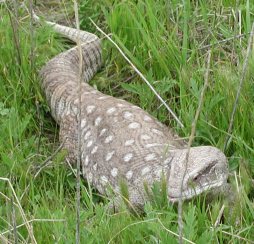 Savannah monitors are often labeled beginner monitors. THEY ARE NOT. They have been assigned this label for a variety of reasons. First, they are readily available and very inexpensive. They only cost importers less than $5.00 each and are imported by the thousands. Savannah monitors also have a reputation for becoming tame. However, of the hundreds of thousands of imported Savannah monitors how many survive never mind becoming tame? The answer is very few. Not because they are fragile animals nor is it because they do not make good captives. It is because they fall into the hands of beginners, who are not ready for taking care of a (Captive Savannah monitor foraging in a field.)
Savannah monitors are often labeled beginner monitors. THEY ARE NOT. They have been assigned this label for a variety of reasons. First, they are readily available and very inexpensive. They only cost importers less than $5.00 each and are imported by the thousands. Savannah monitors also have a reputation for becoming tame. However, of the hundreds of thousands of imported Savannah monitors how many survive never mind becoming tame? The answer is very few. Not because they are fragile animals nor is it because they do not make good captives. It is because they fall into the hands of beginners, who are not ready for taking care of a (Captive Savannah monitor foraging in a field.)
monitor lizard. Often times these monitors are fresh imports who are mal-nourished, carry parasites, and need to be nursed back to health. Virtually all Savannah monitors are imported, so if somebody is offering a CB Savannah monitor ask them for proof. If you are a beginner get a captive bred monitor, such as an ackie, it will save you a ton of headaches.
Savannah monitors reach a moderate size for a monitor. Males can reach over 4' in length while females are typically smaller. They are a heavily bodied monitor and care must be taken that they are not overfed and become obese. Young Savannah monitors can be fed mostly an insect diet. They will readily take crickets, worms, snails, and roaches. Be sure to dust insects with a good calcium supplement such as repto-cal or miner-all. As they increase in size they may become less interested in the smaller insects and it may become more practical to feed mice.
Hatchlings can be housed in a 55-gallon aquarium. However these monitors will grow extremely fast and you will soon need to be thinking about larger accommodations. When my Savannah monitor was 14" I moved him into a 6'x2'x2' cage. An adult should be housed in a 8'x4' but larger is better. Savannah monitor love to burrow so a deep substrate is needed and dirt is preferred. There should be a basking spot of 130+ degrees and the ambient on the cool side should be around 75.

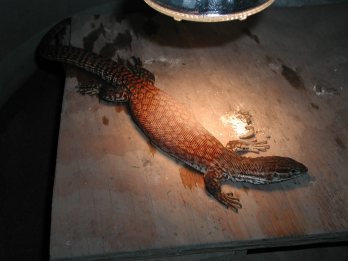 Ridge-tailed monitors or ackies are in my opinion one of the best beginner monitors available. The high cost of the monitor itself often turns beginners off, but I encourage you to consider them. In the long run the Ackies will be cheaper for many reasons. They are all captive born so they should not have to be treated for parasites which means no expensive vet visits. They eat less amounts of food than larger monitors and can be fed crickets their entire life. They only attain a relative small size and do not require large (Ackie basking)
Ridge-tailed monitors or ackies are in my opinion one of the best beginner monitors available. The high cost of the monitor itself often turns beginners off, but I encourage you to consider them. In the long run the Ackies will be cheaper for many reasons. They are all captive born so they should not have to be treated for parasites which means no expensive vet visits. They eat less amounts of food than larger monitors and can be fed crickets their entire life. They only attain a relative small size and do not require large (Ackie basking)
expensive enclosures.
Ackies are generally easy going monitors who do not mind interactions, although there are plenty of exceptions. The best advantage of ackies and other "dwarf monitors" is being able to house a trio or pair of them in a relatively small enclosure. You will be able to learn a great deal about monitor behavior and monitor needs, which will provide essential information if you decide to keep other species.
Ackies reach a small size in the monitor world. They tend to get around 2' although many are smaller and some larger. Ackies can live on a diet of insects their entire life. I feed almost exclusively crickets with the rare pinky mouse as a treat. They will readily take worms, roaches, and other insects as well. Be sure to dust insects with a good calcium supplement such as repto-cal or miner-all.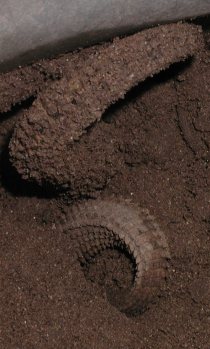
I prefer to try and keep my monitors in the same cage throughout their lives. That said, I have keep my trio in a 5'x2'x2' trough. A 6'x2'x2' would be best but slightly smaller will suffice. You can put them in a smaller cage if you must, but they grow rapidly and will need a larger enclosure in about 6 months. Ackies like most monitors love to burrow so a deep substrate is needed and dirt is preferred. A minimum of 12" is recommended but if you can provide more then by all means do so. The substrate should be moist but not wet. This is important because if kept in a too dry of cage you will experience many problems due to retained sheds. This includes toes falling off. There should be a basking spot of 130+ degrees and the ambient on the cool side should be around 75. A water bowl should be provided and a few branches for them to climb on will no hurt either.
(Two ackies sharing a burrow)

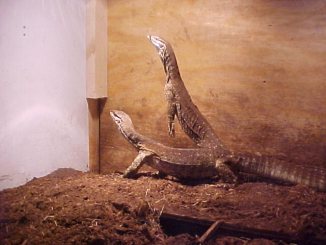 Written by Chad Jacobs
Written by Chad Jacobs
Here is my take on the care for argus monitors. This care sheet is for a single animal or a breeding pair.
CAGE SIZE- 8 feet long, 4 feet wide , 4 feet tall. Make sure you build it to open from the top. Side opening cages don't work well.
SUBSTRATE-Dirt works best. It should be no less than 2 feet deep. A tip to make (Two argus monitors, one tripoding photo by Chad Jacobs)
burrowing easier, which is very important, is to lay plywood on top of the substrate.
HEAT-The cool side of the cage should stay around 80 degrees. The basking temps I use are 125-130 degrees.
FOOD- I feed adult mice as the main diet. I'll also give them roaches and turkey with Miner-all, but only when I'm out of mice. As far as how much to feed them, let's just say a lot. I was able to fill up one of my argus monitors in six days costing $36 on the seventh day it was full. Note on feeding, if your basking spot is too cool your argus will not have the energy and appetite it should, and if you feed without the proper heat you will end up with a fat animal. FAT ANIMALS DIE YOUNG.
HUMIDITY- With the high temps needed, you will need to maintain high humidity. One of the most common ways to do this is to control the air flow leaving your cage.
WATER-I use a large water dish just to be on the safe side. It is not too often that I see them drink but it's there if they want it.
ATTITUDE- If you ask most argus monitor keepers if Argus are tame, they will laugh in your face. The "tame" argus is rare. If you are looking at an argus and it seems inactive, you should take it to the Vet or check your husbandry. If you are looking for an animal that will keep you watching its cage to see what it will do next. Then maybe an argus is for you.
There are many more species out there, these are just a few
Stop on over to our store and check out Monitor supplies! CLICK HERE






 Conservation status: woma Aspidites ramsayi and Indian rock python Python molurus molurus are endangered, most other pythons are becoming more rare due to the trade in snake skins and habitat destruction.
Conservation status: woma Aspidites ramsayi and Indian rock python Python molurus molurus are endangered, most other pythons are becoming more rare due to the trade in snake skins and habitat destruction.

 For dwarf monitors to mid-sized monitors (no bigger than 4' in total length) the best type of cage I have used are troughs or stock tanks. These can be purchased from feed or agriculture stores. They can be bought in a variety of sizes the minimum size for even the smallest monitor would be one that is 4' long by 2' wide. For these you will have to fabricate your own lid. The best lid for these is a sheet (or two) of
For dwarf monitors to mid-sized monitors (no bigger than 4' in total length) the best type of cage I have used are troughs or stock tanks. These can be purchased from feed or agriculture stores. They can be bought in a variety of sizes the minimum size for even the smallest monitor would be one that is 4' long by 2' wide. For these you will have to fabricate your own lid. The best lid for these is a sheet (or two) of  The easiest and most effective way of making a basking area for many of the smaller species of monitors is with a multilevel plywood stack. Basically its 2x4's separating plywood sheets. This allows for different temps on different levels. Place the stack
The easiest and most effective way of making a basking area for many of the smaller species of monitors is with a multilevel plywood stack. Basically its 2x4's separating plywood sheets. This allows for different temps on different levels. Place the stack 
 Savannah monitors are often labeled beginner monitors. THEY ARE NOT. They have been assigned this label for a variety of reasons. First, they are readily available and very inexpensive. They only cost importers less than $5.00 each and are imported by the thousands. Savannah monitors also have a reputation for becoming tame. However, of the hundreds of thousands of imported Savannah monitors how many survive never mind becoming tame? The answer is very few. Not because they are fragile animals nor is it because they do not make good captives. It is because they fall into the hands of beginners, who are not ready for taking care of a
Savannah monitors are often labeled beginner monitors. THEY ARE NOT. They have been assigned this label for a variety of reasons. First, they are readily available and very inexpensive. They only cost importers less than $5.00 each and are imported by the thousands. Savannah monitors also have a reputation for becoming tame. However, of the hundreds of thousands of imported Savannah monitors how many survive never mind becoming tame? The answer is very few. Not because they are fragile animals nor is it because they do not make good captives. It is because they fall into the hands of beginners, who are not ready for taking care of a 
 Ridge-tailed monitors or ackies are in my opinion one of the best beginner monitors available. The high cost of the monitor itself often turns beginners off, but I encourage you to consider them. In the long run the Ackies will be cheaper for many reasons. They are all captive born so they should not have to be treated for parasites which means no expensive vet visits. They eat less amounts of food than larger monitors and can be fed crickets their entire life. They only attain a relative small size and do not require large
Ridge-tailed monitors or ackies are in my opinion one of the best beginner monitors available. The high cost of the monitor itself often turns beginners off, but I encourage you to consider them. In the long run the Ackies will be cheaper for many reasons. They are all captive born so they should not have to be treated for parasites which means no expensive vet visits. They eat less amounts of food than larger monitors and can be fed crickets their entire life. They only attain a relative small size and do not require large 

 Written by Chad Jacobs
Written by Chad Jacobs


